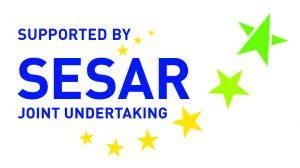During these past months, the ARTIMATION Project has been developing the XAI algorithms to support the ATCOs’ tasks that, according to workshop for task T3.2 – Prioritisation Workshop, would need more the help of XAI: AI optimises utilisation capacity and AI issues instructions. Two different tools will result from this task: a Conflict Detection and Resolution tool and a Delay Prediction and Propagation tool. In the project simulations organised by ENAC in Toulouse between May and June 2022, the Consortium will test and validate the tools resulted from T3.2. In particular, the Conflict Detection and Resolution tool will be tested presenting XAI outcomes with different visualisation techniques, such as a screen-based and a 3D visualisation. The trials will help to better understand ATCOs’ acceptance, their impact on human performance, the relationship between these two variables and assess the system performance.
How did the ARTIMATION Consortium define the Roadmap after T3.2 Workshop?
On the 5th of August 2021, ARTIMATION held its second workshop for T3.3 to match the user needs earlier identified with the available XAI solutions. The development roadmap focused on two main steps:
- The investigation of novel techniques to support a better understanding of AI models, done through a multivariate data analysis based on heterogeneous data sources and using multimodal machine learning algorithms.
- The analysis of the lifelong machine learning issue made through a “human into the loop” simulation.
In regard to this, passive Brain-Computer Interface technology will be employed, to investigate the implication of different levels of algorithms transparency modalities on the operator’s mental and emotional state.
Organisation of the Workshop T3.3
The T3.3 workshop, as for T3.2 one, was carried out on the collaborative platform MIRO and was conceived for Consortium members participation, such as MDU, ENAC, UNISAP and DBL.
The workshop started with the introduction from UNISAP and DBL of the activities of the day and the display of the expected outcome to align all partners.
Each partner then gave a presentation bringing knowledge and information on each specific subject of competence, in particular:
- Deep Blue:
- Which task to support in relation to the workshop T3.2 outcomes
- Which tool to develop to support the identified task/s
- Mälardalens University
- List of AI algorithms to support the identified tool/s
- List of explainability methods for the AI algorithms
- ENAC
- Methods of explainability visualisation for the tool/s
- List of explainability methods (at different levels)
After the presentation from each partner, in a plenary discussion, the Consortium had to elect the task to be supported by the AI algorithms, the XAI methods, the Visualisation techniques, and the consequent tool to be developed. The identification of the tools allowed achieving the last step of the workshop.
Indeed, it was necessary to establish the level of confidence the tools had to develop. For this reason, chains were created, unifying the different knowledge from the partner.

At the end of the discussion, two tasks have been identified:
- A Conflict Detection and Resolution task, a hybrid between T3.2 workshop “winners”, Task A – AI Issues Instructions and Task B – AI Optimises Utilisation Capacity
- A Delay Prediction and Propagation task, sub-task for Task B – AI Optimises Utilisation Capacity
ARTIMATION Project's Next steps
In these following months, the ARTIMATION Project will be presented on 1st March at the Intermediate Review Meeting, with representatives from EUROCONTROL as member of the Advisory Board, and from the SESAR JU.
After the Intermediate Review Meeting, ARTIMATION will start its validation activities by the end of May.
Stay tuned with ARTIMATION: follow our LinkedIn and Twitter account for the latest news and events about the Project.

